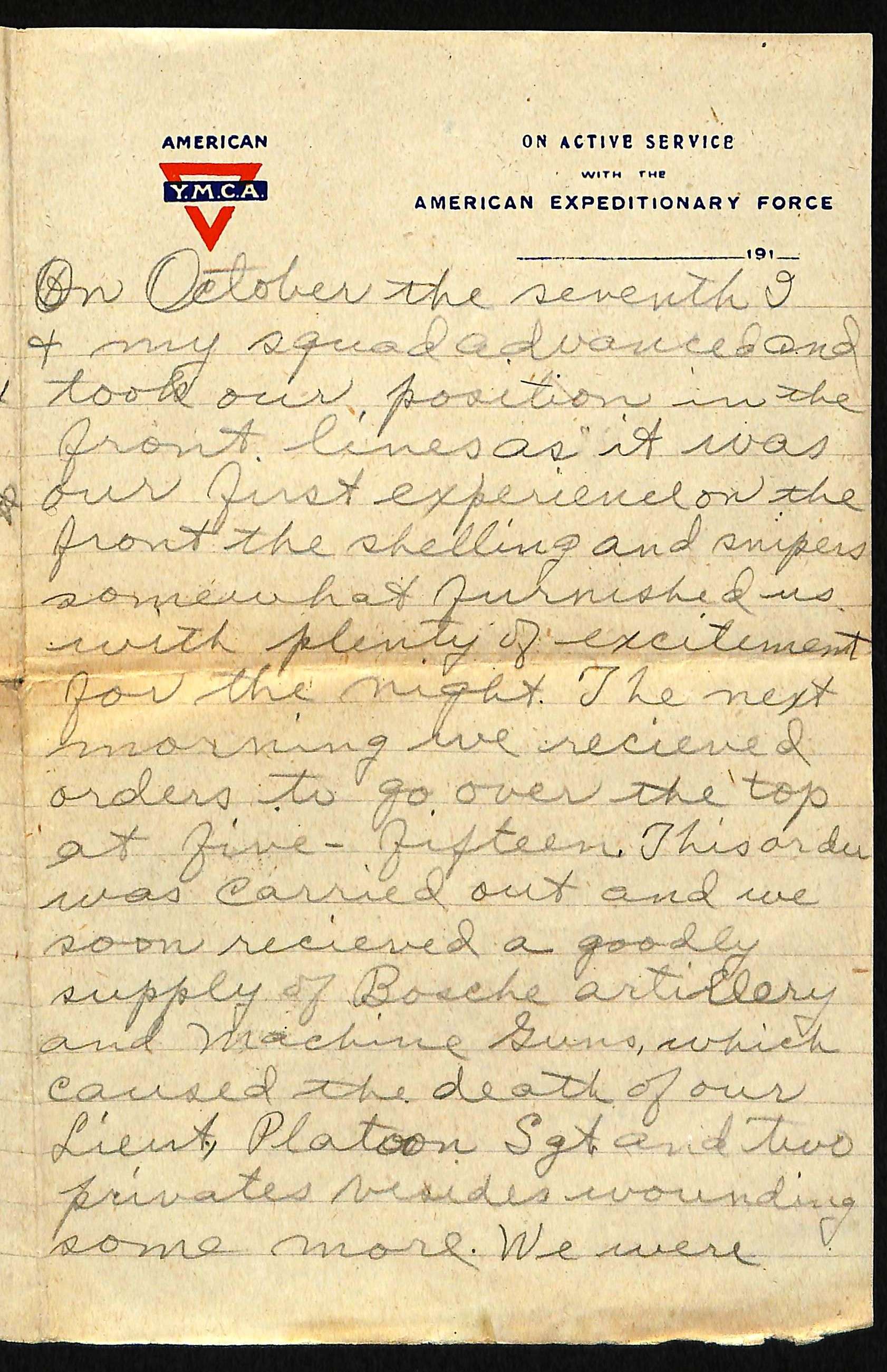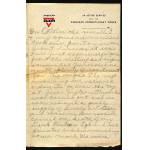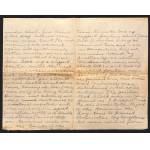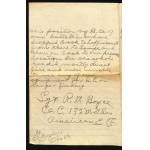WWI Experience of R. M. Boyce
1918
Add to Favorites:
Add all page(s) of this document to activity:

Add only page 1 to activity:
Add only page 2 to activity:
Add only page 3 to activity:
In this eyewitness account, R.M. Boyce described his first experience at the front. He wrote that he was filled with plenty of excitement due to the shell and sniper fire.
This document comes from a collection of "Personal War Experiences" that WWI servicemen were asked to write after their return from the front during the Meuse-Argonne Offensive. The men were personnel of the 36th Division – known as the Lone Star Division, formed from the Texas and Oklahoma National Guard – of the American Expeditionary Forces (AEF).
This document comes from a collection of "Personal War Experiences" that WWI servicemen were asked to write after their return from the front during the Meuse-Argonne Offensive. The men were personnel of the 36th Division – known as the Lone Star Division, formed from the Texas and Oklahoma National Guard – of the American Expeditionary Forces (AEF).
Transcript
American Y.M.C.A.
On Active Service
with the
American Expeditionary Force
On October the seventh I & my squad advanced and too our position in the front lines as it was our first experience on the front the shelling and snipers somewhat furnished us with plenty of excitement for the night. The next morning we received orders to go over the top at five-fifteen. This order was carried out and we soon recieved a goodly supply of Boshe artillery and machine Guns, which caused the death of our Lieut., Platoon Sgt. and two privates besides wounding some more. We were under shell-fire most of the day but no more men were hurt. The next morning we advanced again but with much better success as we lost no men that day. We then took up a support position until the next evening when we advanced and were greeted with a splendid gas attack which lasted about three hours, causing the loss of three men only one being killed. On our next advance we were met with no resistance whatever and marched on in squad formation with no trouble whatever. The next stop the Germans mad was on the banks of the Aisne River. We took up support position about four kilos from San Voburg. We remained here and made us comfortable dug-outs we were bothered by practically no shelling. We advanced some more about Oct. 20 and took up support positions near San Voburg. We were in the forward area here however and naturally were entertained with some artillery. The position that I hald was in open ground so I dropped back to the Woods to the Right of the town in the day-time to prevent observation by aeroplanes. We were relieved from this position by B. Co. of our batallion and we dropped back to Leffincourt from there to Sompe and then on back to our present location. On the whole we did mostly direct fire and were unable to use any of our equipment for D.E. or Range-finding.
[signed]
Sgt. R. M. Boyce
Co. C. 132 M.G. Bn
American E.F. [i.e., American Expeditionary Force}
[noted in different handwriting]
OK.
Ele Bernhold
2nd Lieu
132nd MG Bn
This primary source comes from the Records of the American Expeditionary Forces (World War I).
National Archives Identifier: 77416612
Full Citation: Personal Experience of World War I from R. M. Boyce; 1918; Boyce, R.M. Sgt. 132nd M.G. Bn. Co. C 36th Division 1918, 236.33.61; Records of Divisions, 1917 - 1920; Records of the American Expeditionary Forces (World War I), Record Group 120; National Archives at College Park, College Park, MD. [Online Version, https://docsteach.org/documents/document/wwi-boyce, April 17, 2024]Rights: Public Domain, Free of Known Copyright Restrictions. Learn more on our privacy and legal page.






